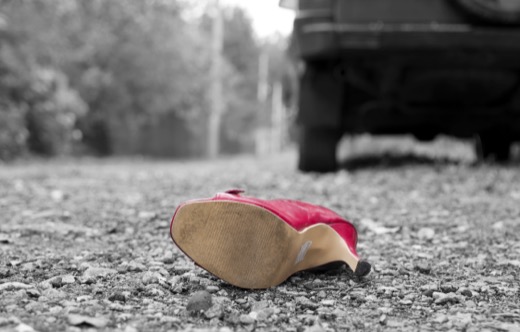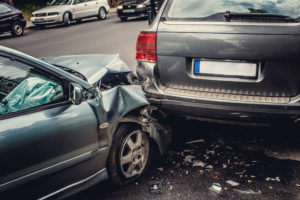If the at-fault driver in a car accident doesn’t stop at the scene and instead chooses to flee away, this would be considered a hit-and-run case. Ohio especially considers a hit-and-run case way too strictly for the accused.
Being charged with a hit-and-run case in Ohio is a nightmare and deals with serious punishments. Here is more about hit-and-run laws in Ohio, and how hiring an Ohio accident attorney can help.
What is hit-skip in Ohio?
Hit Skip is related to a hit-and-run case in Ohio. If any party leaves the accident scene, it’s termed a hit-skip.
Also, per the Ohio hit-and-run law, both drivers involved in a car accident must stay at the scene at least until a police officer or until the contact information is passed on to the other driver or the person injured.
If the injured person is unable to comprehend the information provided by the prospected at-fault driver, the at-fault driver has to then inform about the accident to the nearest police station about or wait until a police officer arrives at the scene of the accident. The only case in which such a person can move is when they have also sustained a serious injury and have been taken by the emergency vehicle.
If the accident includes an unoccupied and standing vehicle, the at-fault driver should still inform the police about such an accident before leaving the scene. Any driver involved in an accident is required to give the below information to the other driver, police officer, or anyone else injured in the accident, with no exceptions:
- Vehicle’s operator name and address
- Vehicle’s registered/license number
- The name and address of the owner if the vehicle was operated by someone else
If the driver has hit a building or other structure, Ohio laws can still file a hit-and-run case against such a driver. In such a situation, the driver must stop at the scene of the accident and take steps to find the owner of the building or property and give them their contact information.
If the owner cannot be located even after best efforts, the driver must contact and inform about the accident in the nearest police station within 24 hours.
Failure to do so results in serious felony punishments as per the Ohio hit-and-run laws. Locating a hit-and-run case driver is the worst task. When the fleeing driver knows they are being followed, the chase becomes scarier as it puts the other drivers on the road on the radar. Some of the hit-and-run chases hurt more people than necessary. However, once caught, the repercussions can be heavy.
Charges for leaving a scene of an accident in Ohio
The accident’s severity determines the penalties given to a person in a hit-and-run case. A hit-and-run case in Ohio is considered a misdemeanor, and if the accident caused serious injuries to the victim of the accident, it might be termed as a felony, equivalent to a criminal offense.
Here are the revised penalties for felonies in Ohio now,
- Misdemeanor of the first degree: A person who does not stop at the scene of the accident on the road/highway after an accident will be charged with a misdemeanor of the first degree, whether or not someone is injured as part of the accident. Such an offense is punishable with a fine of up to $1000 and/or 6 months of imprisonment and a minimum 6-month driving license suspension.
- Felony of the fifth degree: if the accident caused serious injuries to the other driver, leaving the scene of such an accident results in a felony of the fourth degree and results in 6 to 12 months of imprisonment + up to $2500 in fines
- Felony of the fourth degree: if the accused leaves the scene of the accident even after knowing the accident caused serious injuries, the felony results in 6 to 18 months of imprisonment + up to $5000 in fines.
- Felony of the third degree: if the accused leaves the scene of an accident that caused a person’s death, the felony results in 1 to 5 years of jail time + up to $10,000 in fines.
- Felony of the second degree: if the accused leave the scene of the accident even after knowing the accident caused a death, the felony results in 2 to 8 years of imprisonment time + up to $15,000 in fines.
In all cases, a license suspension of 6 to 36 months is expected.
Does my auto insurance cover property damage in a hit-and-run case?
In most states, having uninsured motorist coverage covers most of the damages. Such insurance covers minimum liability limits of:
- $50,000 injury liability for all persons involved in an accident
- $25000 personal injury liability per person
- $25000 property damage per accident
However, in a hit-and-run case, in Ohio, the insurance does not cover the property damage. This means the victim in a hit-and-run case won’t be able to recover the property damage from the insurance company of the alleged offender. In such a case, the victim must file a hit-and-run lawsuit to recover the damages.
When to contact a lawyer in a hit-and-run case in Columbus, Ohio?
Whether you are the victim in the hit-and-run case or the accused, you should contact a hit-and-run case accident lawyer in Ohio as soon as possible. The sooner a case is handled by an experienced attorney, the greater the chances of remission.
If you are a victim, it can be difficult to deal with the insurance company of the convict. It’s no less searching for a needle in a haystack when dealing with the insurance company seeking compensation. Having a skilled Ohio accident attorney by your side provides you with an upper hand in the case.
Moreover, if the hit-and-run accused driver is uninsured, there is no way for the victim to recover the damages expect filing a civil lawsuit. Moreover, according to the Insurance Research Council, more than 1 in 8 drivers in Ohio are uninsured, which increases the chances of having to file a lawsuit for the recovery of damages.
A victim of a hit-and-run case is liable to recover all sorts of damages as recovered in any car accident. From medical expenses and lost wages to property damage, filing a lawsuit gives the right to recover the full compensation amount.





